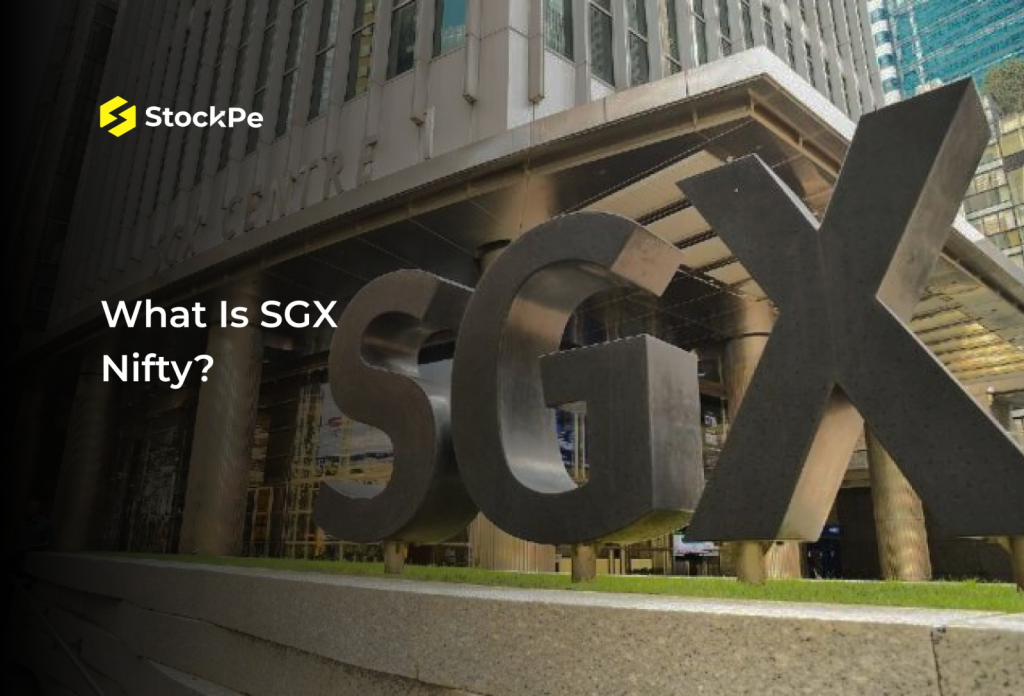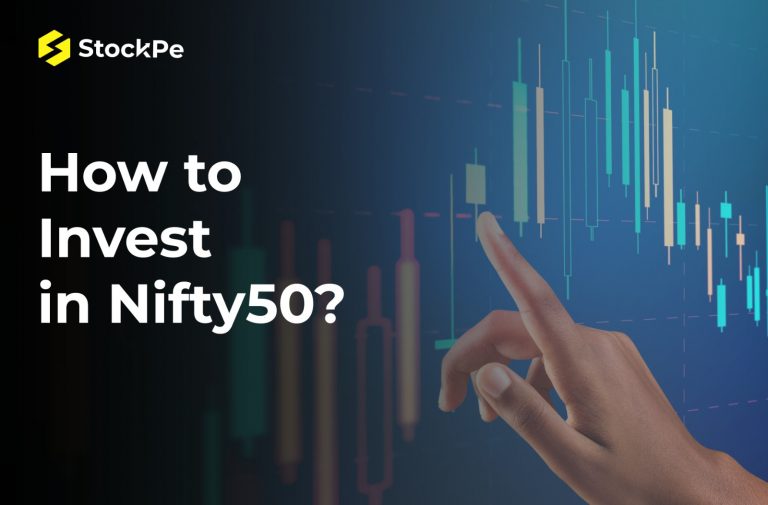In recent years, buying stocks to increase your wealth has grown more widespread and well-liked. The necessity to comprehend all the key words associated to the stock market has grown along with the increase in the number of persons interested in investing in stocks. The phrase “Nifty” will frequently appear in financial news articles in newspapers or on online news sources. These news reports frequently discuss how this platform’s points are rising and falling. What precisely is this Nifty, then? The National Stock Exchange, or NSE, an Indian stock exchange platform, introduces the Nifty, a subset of 50 companies from the index market that are from various economic sectors. It’s crucial to realise that each nation has its unique stock exchange platforms in order to comprehend this platform. Nifty is India’s stock exchange platform, which lets investors understand how a firm performs on a daily basis before making a significant investment. However, there is another name that most people confuse with Nifty. It’s called SGX Nifty. But first, let’s spend a little more time getting to know the name “Nifty” before moving on to understanding what the SGX nifty is truly.

What’s Nifty Is?
NSE indices owns and manages Nifty, which was first introduced on April 22nd, 1996. Nifty is a stock market index for the Indian Stock Exchange (NSE) platform, as was already mentioned. In order to inform investors about the performance of the companies on the stock market, it represents 50 of the major companies in India and gives their weighted average. It is one of India’s two primary stock exchange indices, along with the BSE SENSEX.
Nifty ranks the companies in a rating system that keeps the company performing the best at the top and lists the companies according to their stock market performance. Nifty conducts surveys of the top listed companies to provide investors with information about which business has the potential to perform well in the future so they can make the best investment decisions and maximise their profits.
India’s first international financial hub has emerged as GIFT City. In 2015, RBI lifted FEMA limitations from this area. The change will take place. The revenue of Indian bourses is anticipated to increase in the current fiscal year due to the moving of derivative contracts brought on by the partnership between SGX and Nifty. The higher average fees and volumes from nifty derivative contracts used to be a significant source of income for the Singapore Exchange.
According to the SGX, all open positions in SGX Nifty have been switched to NSE IFSC Nifty as part of a liquidity transfer. According to the agreement, the costs and profits will be distributed “roughly 50-50” between SGX and NIfty, according to Michael Syn, head of equities at SGX. The GIFT City will serve as the venue for futures and option trading, and the SGX will handle clearing.
Now that we understand what nifty is in general, let’s turn our attention to SGX Nifty, which is what we actually came here to study about.
What is SGX Nifty?
A derivative of the Nifty index, known as SGX Nifty, is traded on the Singapore Stock Exchange platform. This deal fixes the price of a share in advance and lowers the risk associated with any future investments. The SGX nifty is the futures trade nifty in Singapore, where the price of the share is preset, and the buyer and seller have to commit to that pre-decided price regardless of any changes that may occur in the stock market in the future. This will help you understand it better. The Indian Nifty trades on the NSE, which is the Indian stock exchange platform.
Given that the Singapore Stock Exchange is the top stock exchange in India, the SGX nifty plays a significant role in the Indian stock market by aiding in the prediction and observation of the behaviour of the Indian Nifty.
What differentiate the SGX Nifty from the Indian Nifty?
The main distinction between the SGX Nifty and the Indian Nifty is that the former trades exclusively on the National Stock Exchange, or NSE, the Indian stock exchange platform, while the latter only trades on the SGX Nifty, a futures trade platform in Singapore where the prices of stocks are predetermined to avoid future risk.
The contract size between the Indian Nifty and the SGX Nifty is another significant distinction. In contrast to the SGX nifty, an Indian Nifty contract between a buyer and a seller must have a minimum of 75 shares. As a result, unlike any Indian nifty, the SGX nifty does not have a contract with shares.
Because it is the busiest trading platform in Singapore and the only one that operates twenty-four hours a day, SGX Nifty sees a lot of consumers and trading activity. With the Indian Nifty, a national trading platform, this is unquestionably not the case. These features of SGX nifty increase its profitability.
How is the Indian Market affected by SGX Nifty?
As we’ve already mentioned, the SGX Nifty is useful for anticipating and observing the behaviour of the Indian Nifty. The Singapore market opens around 2.5 hours before the Indian market, therefore there is also a timing difference between the Indian Nifty and the SGX Nifty. This enables investors to monitor the SGX nifty to understand market swings and see how the overall trading process is progressing. Investors can determine if the Indian market will open positively or negatively by keeping an eye on this.
As a result, people who are hesitant to participate in the Indian market can do so in SGX and monitor the SGX nifty to gain a head start on learning about the Indian nifty and stock exchange platform.
The results these investors receive are not always precise and depend on the many economic elements present in both nations, despite the fact that it may be a quick approach to assess the Indian market and balance your possibilities. Due to the fact that Singapore and India have extremely different economic systems, this has a variety of distinct but significant implications on market behaviour.
Both the Indian Nifty and the SGX Nifty are equally significant because they influence one another’s conduct in some way, and you cannot discuss one without bringing up the other. Nifty and SGX Nifty phrases, as well as many other financial terminology that are frequently used and play significant roles in the stock market, must first be understood by anybody who wants to enter the world of the stock market and begin trading like an expert.
Who is allowed to trade on SGX Nifty?
Individual Indian residents are not permitted to trade in the SGX Nifty.
Only certain individuals and overseas portfolio investors are authorised. Indian NRIs are also permitted to trade on the SGX Nifty.
Trading SGX Nifty is a realistic choice for any investor who wants to trade Nifty but is unable to access the Indian Markets. Furthermore, even big hedge funds who have a lot of exposure to the Indian market see SGX Nifty as a good alternative for hedging their positions.The NSE trades Nifty for 6.5 hours, from 9:00 AM to 3:30 PM, whereas the SGX trades Nifty Futures for 16 hours, from 6.30 AM to 11.30 PM (IST). This shows that SGX Nifty Futures are traded both before and after the Indian markets open.
Due to their prolonged trading hours, SGX Nifty Futures may be able to detect global trends even while Indian markets are closed. Given that the Singapore market opens 2.5 hours earlier than the Indian market, at 6.30 AM (IST), and is directly connected to the NSE market, the SGX Nifty trend can be utilised to forecast the initial direction of the Indian stock exchange. Because of this, a lot of traders use it to predict the movement of the Indian stock market.
The Indian stock market permits intraday traders to keep either long or short positions depending on the movement of the SGX Nifty.
Advantages of SGX Nifty:
It serves as a respectable cover for investors without access to Indian marketplaces to do any activity in US dollars. More foreign investors are entering the Indian derivatives market as a result of the expanded working hours of SGX Nifty. Due to their close proximity, India and Singapore have faster communication and less lag time between their exchanges. The SGX Nifty’s extended trading hours give transactions greater sway, especially when it comes to hedge funds. The 16-hour window facilitates market players’ decision-making and enables them to compare the Indian markets to overnight developments on Wall Street.
Negative aspects of SGX Nifty trading:
In response to global political upheaval and economic cycles, the SGX Nifty is more erratic than the NSE Nifty. Trading in SGX Nifty contracts is forbidden for citizens of India. Difference among the SGX Nifty and the NSE Nifty The Indian stock market has a six and a half hour opportunity to trade between 9:15 AM and 3:30 PM. The Singapore Stock Exchange’s SGX Nifty, on the other hand, is open from 6:30 AM to 11:30 PM IST, trading for 16 hours every day. The SGX’s extended trading hours make sure that the effect of major world events on the companies traded there is more pronounced.
The Bottomline:
The GIFT Nifty, formerly known as SGX Nifty, has grown to be a prominent outlet for traders and investors looking for exposure to Nifty futures contracts outside of the hours of the Indian stock market. In addition to bridging the time difference between worldwide markets and the Indian stock exchange, this tool also offers insights into global market patterns that may affect the mood of the Indian market. The GIFT Nifty is a component of the GIFT City’s International Financial Services Centre and highlights India’s effort to establish an environment that is favourable for international financial activity.
The GIFT Nifty reflects India’s effort to establish a favourable environment for international financial activities as a component of the International Financial Services Centre in GIFT City. Understanding the GIFT Nifty’s operating principles, advantages, and trading tactics will help investors and traders manage their risk more effectively in the unpredictable world of international trading.





